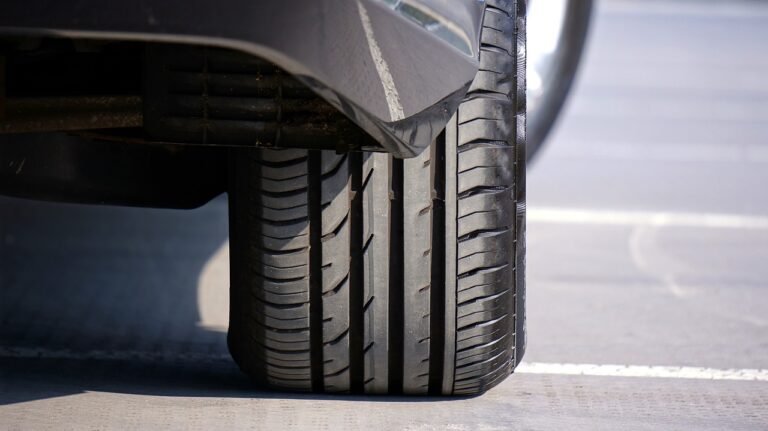Digital Twin Technology in Automotive Machining
skyexch, world777, goldsbet login: Digital twin technology has been revolutionizing the automotive industry, particularly in the realm of machining processes. By creating virtual replicas of physical machines and processes, manufacturers can simulate, monitor, and optimize their operations in real-time, leading to increased efficiency, reduced downtime, and higher quality products.
In this blog post, we will delve into the world of digital twin technology in automotive machining, exploring its benefits, applications, and future implications for the industry.
Understanding Digital Twin Technology in Automotive Machining
Digital twin technology involves creating a virtual representation of a physical machine or process, using real-time data from sensors and other sources to monitor and simulate its operation. In the context of automotive machining, digital twins can be used to replicate the performance of CNC machines, robotic arms, assembly lines, and other manufacturing processes.
By creating a digital twin of a machining operation, manufacturers can analyze and optimize various parameters such as cutting speeds, tool paths, and material feeds, without disrupting the actual production process. This allows them to identify potential issues, predict maintenance needs, and improve overall efficiency and quality.
Applications of Digital Twin Technology in Automotive Machining
The applications of digital twin technology in automotive machining are vast and varied. Here are some key areas where digital twins are making a significant impact:
1. Predictive Maintenance: By continuously monitoring the performance of machining equipment through digital twins, manufacturers can predict when maintenance is required before a machine breaks down. This proactive approach helps reduce downtime and extend the lifespan of equipment.
2. Process Optimization: Digital twins enable manufacturers to simulate different machining scenarios and optimize parameters such as tool selection, cutting speeds, and feed rates to achieve the desired outcomes. This leads to improved efficiency, reduced waste, and higher quality parts.
3. Virtual Commissioning: Before implementing a new machining process or equipment, manufacturers can use digital twins to simulate and validate the operation virtually. This helps identify potential issues and fine-tune processes before physical implementation.
4. Remote Monitoring and Control: With digital twin technology, manufacturers can remotely monitor and control machining operations from anywhere in the world. This flexibility allows for real-time adjustments and troubleshooting, minimizing delays and ensuring continuous production.
5. Quality Assurance: Digital twins can be used to monitor key quality metrics during the machining process, such as surface finish, dimensional accuracy, and material properties. By comparing real-time data with expected outcomes, manufacturers can identify and address quality issues promptly.
Future Implications of Digital Twin Technology in Automotive Machining
As digital twin technology continues to evolve, its implications for the automotive machining industry are far-reaching. Here are some potential future developments to watch out for:
1. Integration with Artificial Intelligence: By combining digital twins with AI algorithms, manufacturers can further enhance their predictive maintenance capabilities, optimize complex machining processes, and automate decision-making in real-time.
2. Industry 4.0 Adoption: As more manufacturers embrace the principles of Industry 4.0, digital twin technology will play a central role in creating smart factories that are interconnected, data-driven, and agile. This integration will lead to increased efficiency, reduced costs, and improved competitiveness.
3. Augmented Reality Interfaces: Imagine technicians wearing augmented reality headsets that overlay digital twin data onto physical machinery, providing real-time insights and instructions for troubleshooting and maintenance tasks. This immersive experience will revolutionize how machining operations are managed and optimized.
4. Supply Chain Optimization: Digital twins can be extended beyond the shop floor to encompass the entire supply chain, enabling manufacturers to optimize logistics, inventory management, and production planning. This end-to-end visibility will lead to smoother operations, reduced lead times, and better customer satisfaction.
FAQs
Q: How does digital twin technology differ from traditional simulation software?
A: Traditional simulation software typically relies on static models that are not connected to real-time data. In contrast, digital twin technology uses dynamic models that are continuously updated with sensor data, allowing for real-time monitoring and optimization of processes.
Q: Is digital twin technology only applicable to large automotive manufacturers?
A: No, digital twin technology can be scaled to fit the needs of small to medium-sized manufacturers as well. With the increasing availability of affordable sensors and cloud computing resources, companies of all sizes can benefit from implementing digital twins in their machining operations.
Q: What are the key challenges in adopting digital twin technology in automotive machining?
A: Some of the key challenges include data integration and compatibility issues, security concerns related to storing and transmitting sensitive manufacturing data, and the need for skilled personnel to develop and maintain digital twin models. Overcoming these challenges requires a strategic approach and investment in infrastructure and workforce training.
Q: How can manufacturers get started with implementing digital twin technology in their machining operations?
A: Manufacturers can start by conducting a thorough assessment of their current processes and identifying areas where digital twins can make the most impact. They can then invest in sensors, data analytics tools, and simulation software to create virtual replicas of their machining equipment and processes. Collaboration with technology partners and consultants can also help accelerate the implementation process.
In conclusion, digital twin technology is transforming the automotive machining industry by enabling manufacturers to simulate, monitor, and optimize their operations in real-time. By leveraging the power of digital twins, companies can achieve higher efficiency, better quality, and increased competitiveness in today’s fast-paced manufacturing landscape. As the technology continues to evolve, the possibilities for innovation and improvement are endless, making digital twins a valuable asset for the future of automotive machining.







